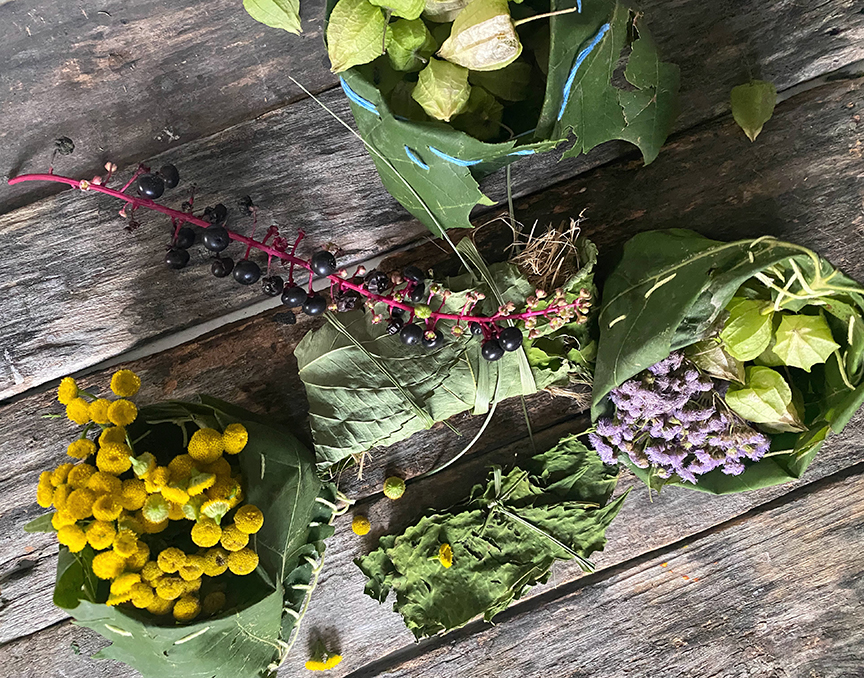
One of my favorite things about seasonal midpoints is that they reflect what is happening in nature– and different cultures all over the place have similar observances. As I was researching Equinox around the world this year I stumbled across a random mention of the the French Republican Calendar– which was briefly instituted in France after the French Revolution. They instituted a calendar that began the year on the Autumn Equinox and had months named after things happening in nature. The first month was named for the grape harvest. This got me thinking about phenology which the science of tracking seasonal changes. (And one of my favorite things!) I decided to go for a walk in the garden and see what seasonal changes might inspire me. Sadly I don’t have any grapes to harvest right now, but last Equinox I made wild grape ink and I can’t stop thinking about roasted grapes this year. I was especially struck by all of the bees scurrying around getting ready for winter.
The bees buzzing around scooping up their last bits of pollen got me thinking about making foraging bags for the kids to collect seeds and berries. They are perpetually collecting and storing berries nuts and ephemera in their little fairy villages. “Little” is a misnomer here– they are realistically more like fairy settlements and they are all over my yard and the neighbors. This is imaginative play at its finest– they have built their own little world and systems that grownups don’t prepare or interfere with. There is nothing that encourages creativity and problem solving as effectively as this type of unstructured play. According to my children and their friends, these are warrior fairies who don’t have wings and ride around on birds and mice. They remind me of The Tree Keepers which would be a good source of inspiration. They spend hours building spaces for them. But anyway, I stumbled across one of their little leaf packages (it’s pictured with the baskets) and it occurred to me that rather than making something for them, I could show them how to make little folded leaf baskets. It’s also a great time for year for large still pliable leaves.
I find sewing leaves to be oddly satisfying. It’s a great hand eye coordination activity for littles and fun for older kids (and grown ups…) In fact, I have made some artwork with sewn leaves and I’m not alone. The work of Hillary Waters Fayle and Susanna Bauer are both an amazing source of inspiration for this project. You can do a simple running stitch to hold your baskets togther or you can do some embroidery or more complicated stitches inspired by these artists. I love the idea of mending leaves, totally impractical, but such an interesting way to symbolize care. It makes me think of wabi-sabi, (a traditional Japanese world view centered on the acceptance of transience and imperfection. The aesthetic is sometimes described as one of appreciating beauty that is “imperfect, impermanent, and incomplete” in nature) and kintsugi (the Japanese art of repairing broken pottery by mending the areas of breakage with lacquer dusted or mixed with powdered gold, silver, or platinum. As a philosophy, it treats breakage and repair as part of the history of an object, rather than something to disguise.)
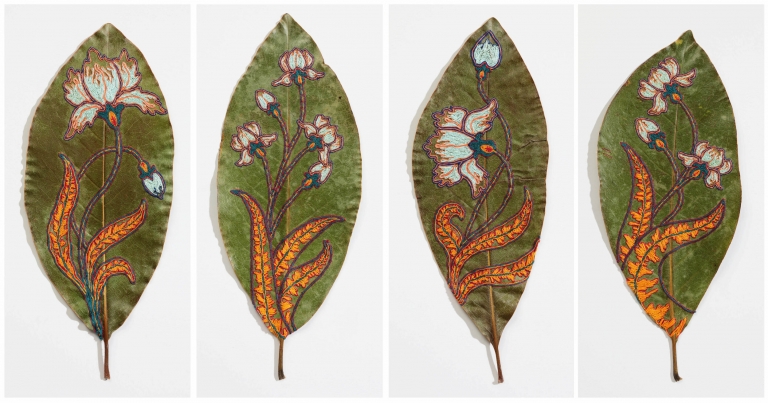
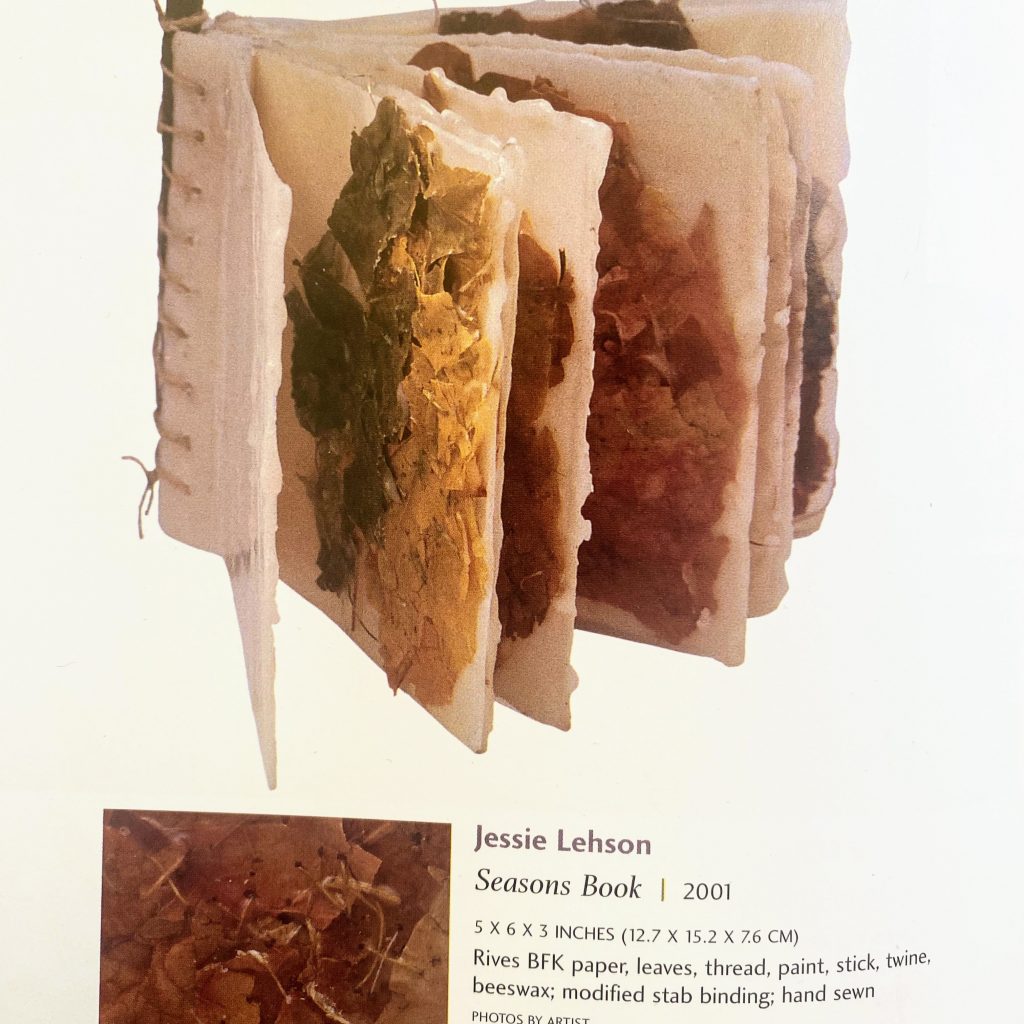
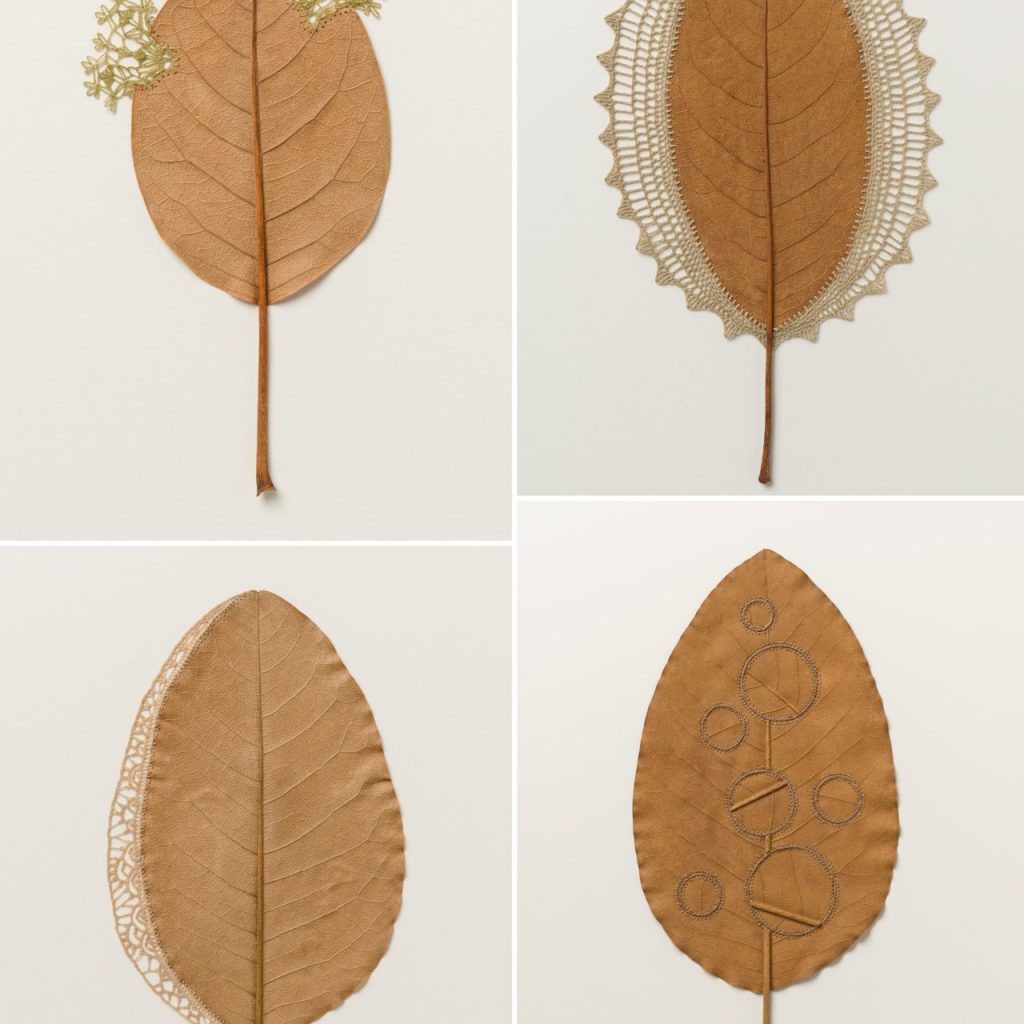
Whether or not you are interested in the philosophy, this is a fun and easy project for all ages. We made bunches of baskets and the kids quickly filled them up with their winter stores. A fun and easy way to celebrate the Autumn Equinox!
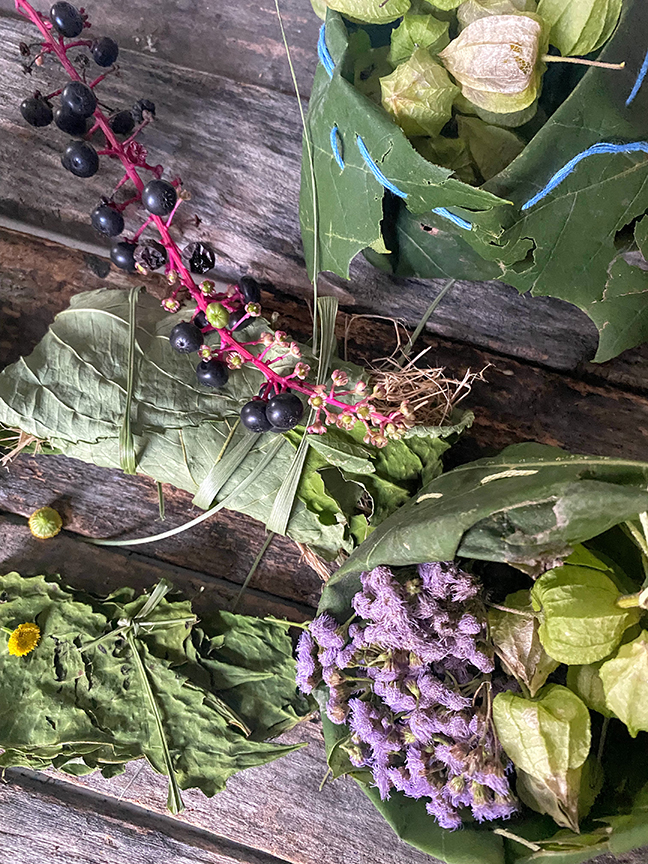
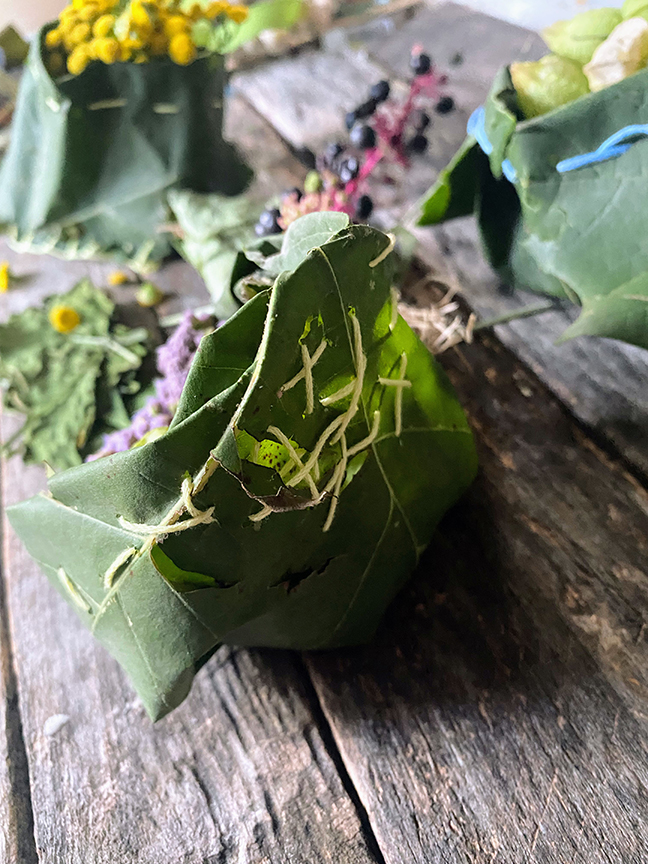
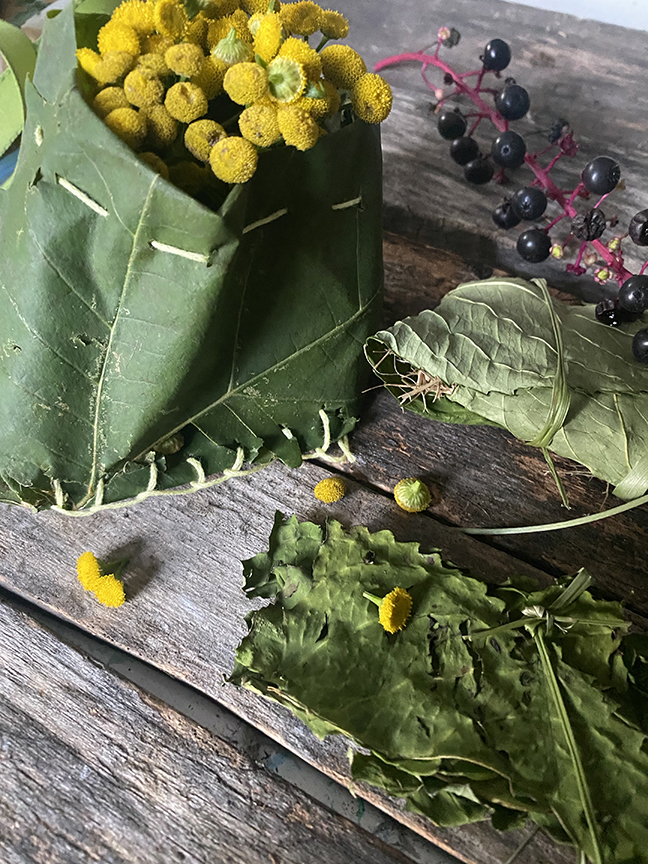
Autumn Leaf Fairy Foraging Baskets
These are easiet to make with leaves that have three sections like sycamore, maple or tulip poplar, but you can make most leaf shapes work with some creative folding. Use a cotton thread or something that will decpmpose if left outside, which they inevitably will be… Younger friends may want to skip teh folding and just practice sewing leaves which is a great skill builder and tons of fun!
Materials:
- big leaves still fresh enough to be flexible
- embroidery floss
- blunt needles
- scissors
- foraged bits and pieces to fill your basket
Method:
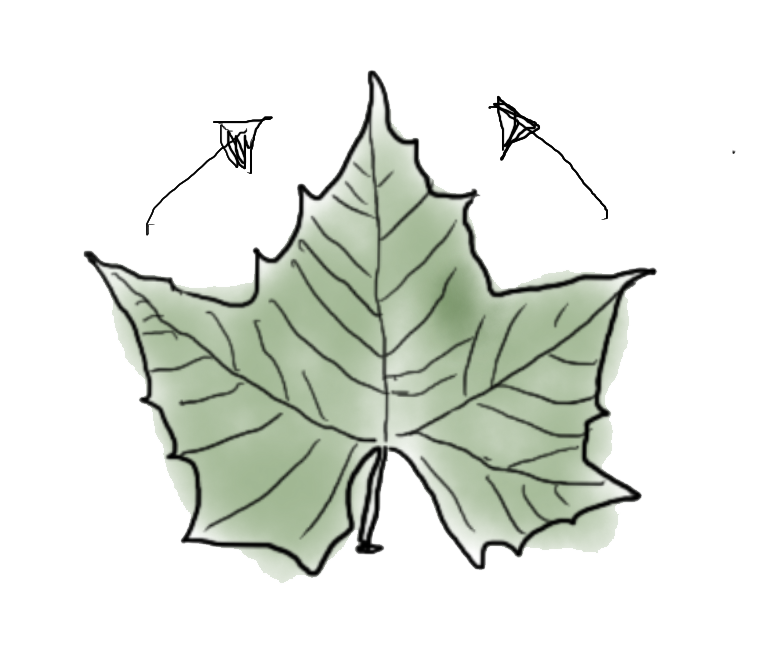
Fold the two side points in to cross over the center point. This will start to create a basket shape. You can fold the leaf points over or leave them sticking up as you prefer,
The stem side of some leaves will automatically fold in a basket wall on the other side, with others you may have to fold that side together too. You’ll now have a roundish basket shape with the center of the leaf as the base. (It makes more sense when you do it I swear!)
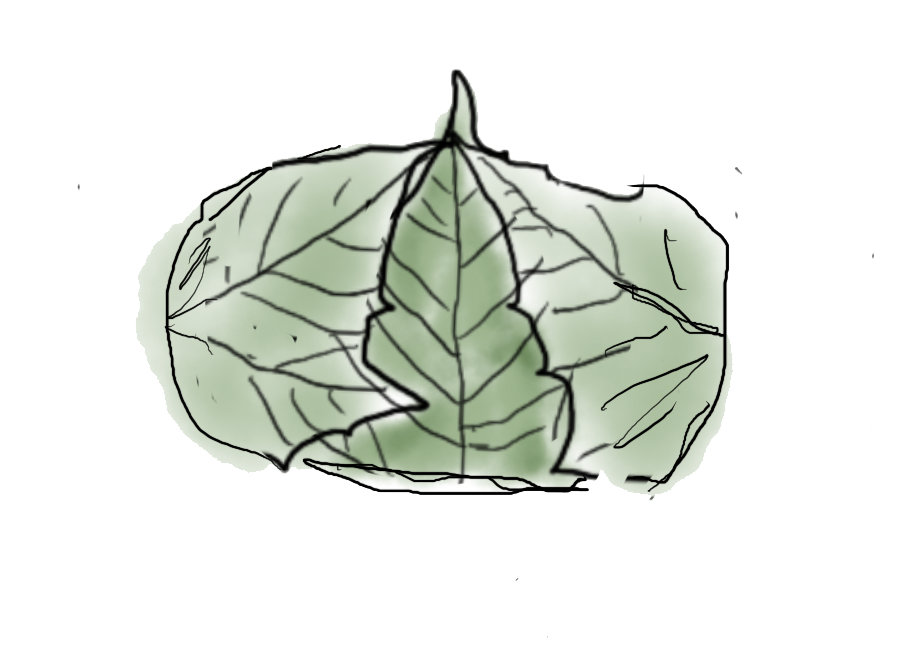
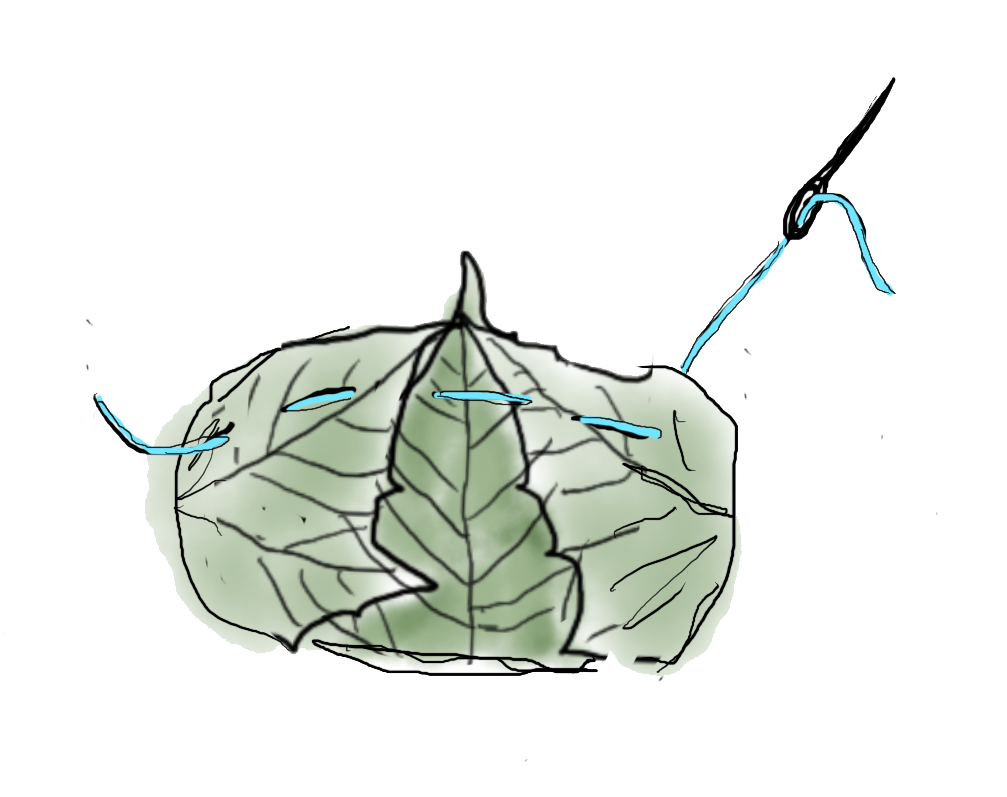
Holding your leaves in places sew around the top edge to secure everything. You can be a fancy or utilitarian with your stitching as you want. Be gentle when pulling the thread through as the leaf is far more delicate than fabric. After the top is secure you can add decorative stitching as you see fit. Fill our baskets with fairy treats and get ready for the winter!
